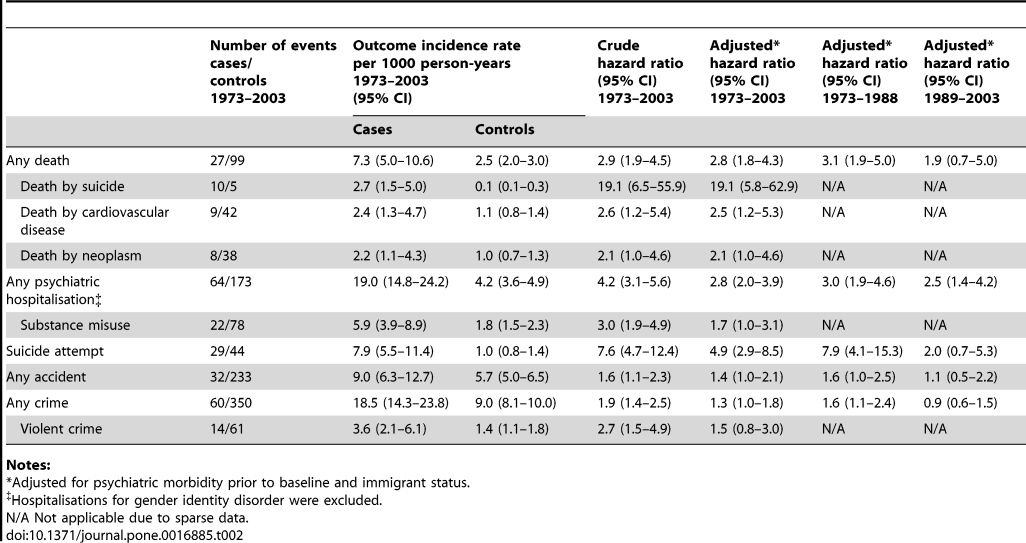
http://journals.plos.org/plosone/article?id=10.1371/journal.pone.0016885
Long-Term Follow-Up of Transsexual Persons Undergoing Sex Reassignment Surgery: Cohort Study in Sweden
Cecilia Dhejne, Paul Lichtenstein, Marcus Boman, Anna L. V. Johansson, Niklas Långström, Mikael Landén
PLOS
Published: February 22, 2011 http://dx.doi.org/10.1371/journal.pone.0016885
We identified 324 transsexual persons (exposed cohort) who underwent sex reassignment surgery and were assigned a new legal sex between 1973 and 2003. These constituted the sex-reassigned (exposed) group. Fifty-nine percent (N = 191) of sex-reassigned persons were male-to-females and 41% (N = 133) female-to-males, yielding a sex ratio of 1.4∶1 (Table 1).
...
Transsexual individuals were at increased risk of being convicted for any crime or violent crime after sex reassignment (Table 2); this was, however, only significant in the group who underwent sex reassignment before 1989.
Comparisons of female-to-males and male-to-females, although hampered by low statistical power and associated wide confidence intervals, suggested mostly similar risks for adverse outcomes (Tables S1 and S2). However, violence against self (suicidal behaviour) and others ([violent] crime) constituted important exceptions. First, ... (part about suicide attempt rates) ...
Second, regarding any crime, male-to-females had a significantly increased risk for crime compared to female controls (aHR 6.6; 95% CI 4.1–10.8) but not compared to males (aHR 0.8; 95% CI 0.5–1.2). This indicates that they retained a male pattern regarding criminality. The same was true regarding violent crime. By contrast, female-to-males had higher crime rates than female controls (aHR 4.1; 95% CI 2.5–6.9) but did not differ from male controls. This indicates a shift to a male pattern regarding criminality and that sex reassignment is coupled to increased crime rate in female-to-males. The same was true regarding violent crime.
